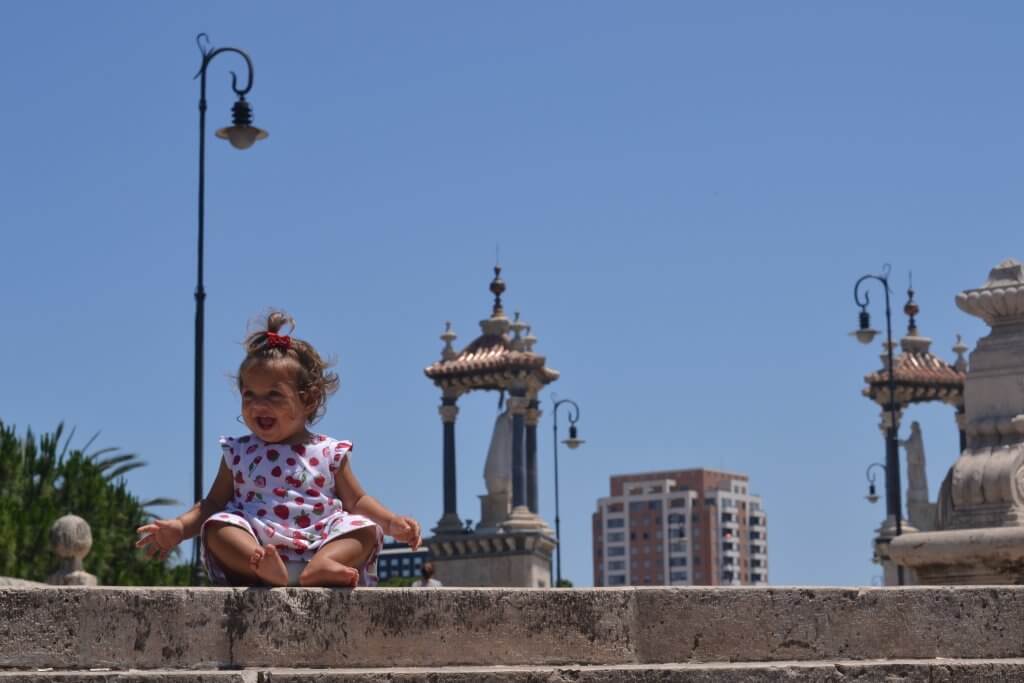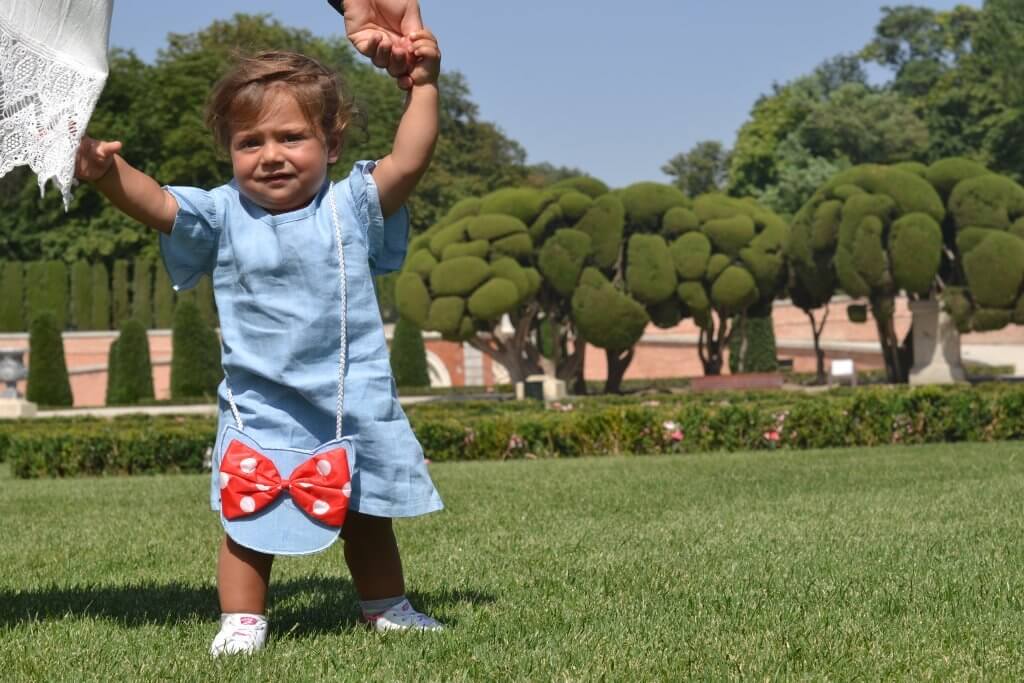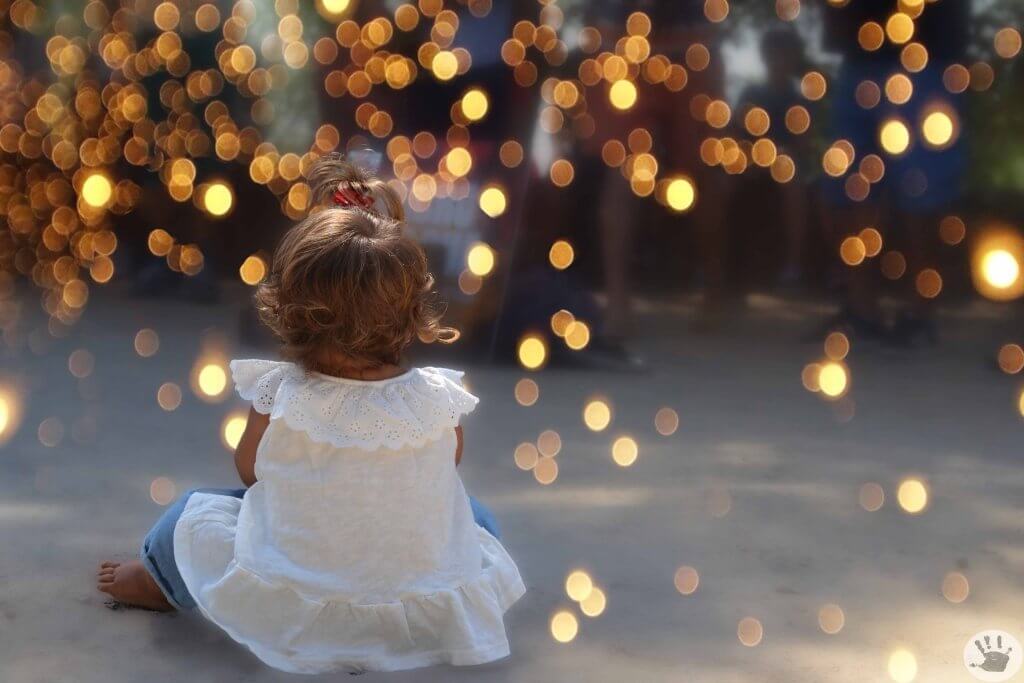Complete guide to visiting Park Guell with kids
Discover everything you need to know before visiting Park Guell with kids
We tak about
ToggleWhere Park Guell comes from: a fascinating story to tell your little explorers
When you decide to visit Park Guell with kids, I think it’s important to take the opportunity to share with them the unique history of the park. Park Guell was born from the dream of Eusebi Güell, a wealthy industrialist who, together with architect Antoni Gaudí, wanted to create a garden city in Barcelona. The idea was to build a residential neighborhood surrounded by nature, far from the chaos of the city. However, the project didn’t go as planned, and only two houses were completed. Gaudí didn’t account for the Barcelonans of that time, who preferred to have a home in the city center to assert their social status.
Over time, the park transformed into what we know today: a masterpiece of art and nature, becoming one of the symbols of Barcelona.
Telling your little explorers what to see in Park Guell with kids becomes even more interesting when they know the story of how it all began; for me, it’s almost essential to answer all their countless questions.
Gaudí and his dream of a garden city
When you think about what to see in Park Guell with kids, it’s important to know the original project behind this magical place. In the early 20th century, Eusebi Güell commissioned Antoni Gaudí to build a garden city inspired by English models. The idea was to create an exclusive residential neighborhood, surrounded by greenery and away from the chaos of the city. The project included 60 plots of land, all connected by winding avenues, ramps, and viaducts perfectly integrated with the surrounding nature. The houses were meant to blend into the landscape, harmonizing with the environment without overwhelming it.
True to his vision, Gaudí wanted every corner of the park to be a work of art, rich in naturalistic and symbolic details.
The surrounding wall is an impressive structure that encloses 20 hectares of land; although it may seem like a disruptive element, it actually follows and almost contains the natural slope. The top is crowned with a mosaic featuring medallions that display the park’s name. There are several entrances: some for pedestrians and others for vehicles, meant for cars that were supposed to reach the residential plots.
Some buildings were already present in the park, particularly a house owned by Eusebi Güell, which has now been transformed into a school. Güell only sold the plots after building public facilities and a general utility system: he arranged the entire electrical system, lighting for the park and roads, the telephone system, and even constructed a large cistern for collecting rainwater, particularly useful given the arid nature of the land. However, his idea of a garden city did not gain much success at that time: only two plots were sold, one of which was bought by Antoni Gaudí, who moved in with his ninety-year-old father and a niece. At the same time, this place quickly attracted the interest of many groups and associations looking to hold outdoor performances and gatherings there.
The importance of nature as a form of decoration in Park Guell
Even though it didn’t find success with the idea he had, this plot of land allowed Gaudí to showcase his landscaping talent. Early in his university career, he had taken an elective course in natural sciences and had also passed some botany exams, which enabled him to play with exquisite plant compositions. Here, he chose to import various species typical of the Mediterranean scrub and other subtropical varieties.
In addition to Gaudí’s incredible architecture, one of the most fascinating things to see in Parc Guell with kids is the lush nature that surrounds every corner of the park. Gaudí was deeply connected to the land and designed the park to blend harmoniously with the natural landscape. Among the Mediterranean plants you’ll find are pines, palms, olive trees, and cypresses, as well as flowers like bougainvillea and jasmine, which, with their vibrant colors, help create a magical atmosphere. Walking with kids through these gardens is an experience that brings them closer to the beauty of nature while discovering how Gaudí respected and enhanced the natural landscape in his visionary design.
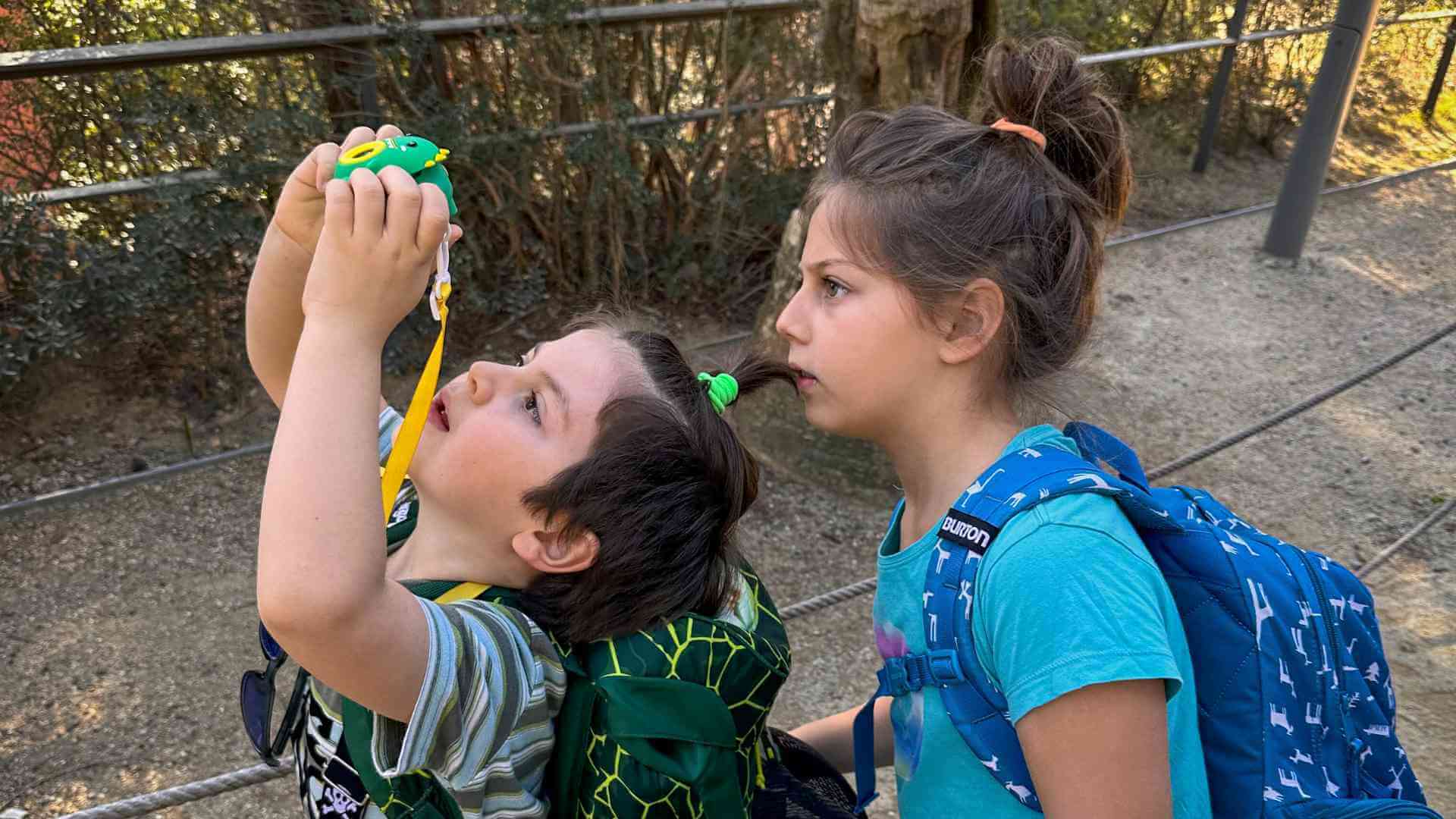
Between mosaics and salamanders: discover the works that will make kids’ eyes shine
When you decide to visit Parc Guell with kids, you can’t miss the park’s most iconic works, which fascinate both young and old.
The salamander El Drac
The first wonder you’ll find at the entrance is the famous mosaic salamander, known as “El Drac.” This colorful creature, located on the main staircase, is one of the most beloved attractions for kids, who can’t wait to take a photo next to her.
The mosaic salamander – at the entrance of Parc Guell
The famous salamander is located right at the main entrance of the park, along the staircase leading to the Hypostyle Hall. It’s impossible to miss her vibrant colors and fairy-tale-like shape. It’s one of the symbols of Barcelona and a must-see for anyone visiting Parc Guell with kids. Here, you can take your first break for unforgettable photos!
The role of the salamander in Park Guell and throughout Barcelona
El Drac is not only one of the park’s most iconic works but also a symbol deeply connected to Gaudí’s vision and the city of Barcelona. Situated on the main staircase, the salamander welcomes visitors with her vivid colors and fairy-tale appearance. In Gaudí’s symbolism, the salamander represents the element of water, fundamental to the initial design of the park, where there was to be an integrated water system beneath the staircase, fed by rainwater collection.
An interesting fact is that the image of the dragon, or salamander, is depicted over 400 times throughout Barcelona. This mythological animal is deeply rooted in Catalan culture, often associated with the legend of Saint George (Sant Jordi), the patron saint of Catalonia, who defeated a dragon to save a princess. Gaudí, very attentive to local symbolism, wanted to include this creature in his works to honor tradition and celebrate the connection to the city. Today, the salamander is not just an attraction for little visitors to Parc Guell but an emblem of Catalan modernist art that continues to inspire and fascinate millions of people.
Plaça de la Natura in Park Guell
As you continue, you’ll arrive at Plaça de la Natura, a large terrace supported by columns where kids can run freely. Here, a long serpentine bench, covered in colorful mosaics, captures attention with its wavy, vibrant shapes. Little explorers will love sitting on this bench, admiring the details of the ceramic fragments used by Gaudí.
The serpentine bench – on the terrace of Plaça de la Natura
Once you climb the staircase, you’ll reach the beautiful Plaça de la Natura, a spacious terrace that offers breathtaking views of the city. It’s here that you’ll find the famous serpentine bench, one of Gaudí’s mosaic masterpieces. Kids will love discovering the sinuous curves and bright colors that decorate every inch of this bench, which embraces the entire square.
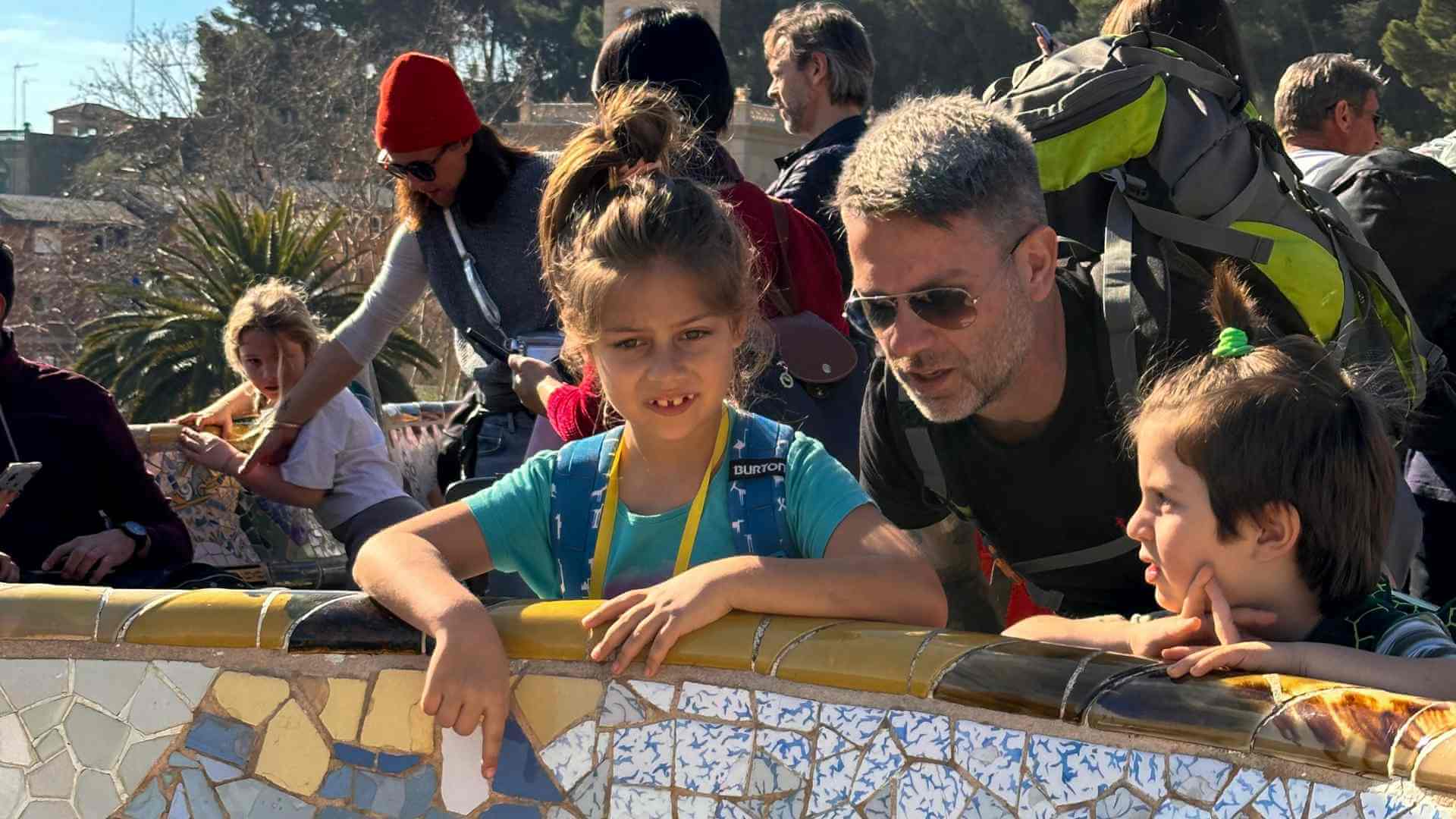
Discover the lesser-known and hidden works to visit Park Guell with kids authentically
These lesser-known corners of Parc Guell to visit with kids will offer you the chance to discover the park’s more secret side, in a tranquil atmosphere surrounded by nature, where Gaudí created masterpieces that often escape the less attentive eye.
The Toad Viaduct: a hidden corner of natural magic
Although less known than other works by Gaudí, the Toad Viaduct is a hidden gem nestled in the greenery of Parc Guell. With its natural stone structure that seems to emerge directly from the hill, this viaduct is perfect for sparking the imagination of little ones. Kids will have fun searching for the cute toad carved into the rock, hidden among the details of the structure.
Where to find the Toad Viaduct
To reach the Toad Viaduct, I recommend starting from the main entrance and following the path that winds down to the lower part of the park, towards the Gaudí House Museum. The viaduct is along a shaded path and can go unnoticed if you’re not paying attention. Look for the signs indicating the viaducts, or follow the side road near the park’s main viaducts.
The Porter’s House: a miniature masterpiece
The Porter’s House, a small structure that looks like it came out of a fairy tale, is one of the hidden gems of Parc Guell. This building, designed by Gaudí to house the park’s caretaker, features mushroom-shaped towers and colorful tiles. Its small size and whimsical details immediately capture kids’ attention.
Where to find the Porter’s House
The Porter’s House is located near the main entrance of Parc Guell, but it’s easy to walk right by without noticing it. As soon as you enter the park, keep to the right, and you’ll see it peeking out next to the entrance hall. The building is small but full of charm, and it’s worth stopping to admire its details up close.
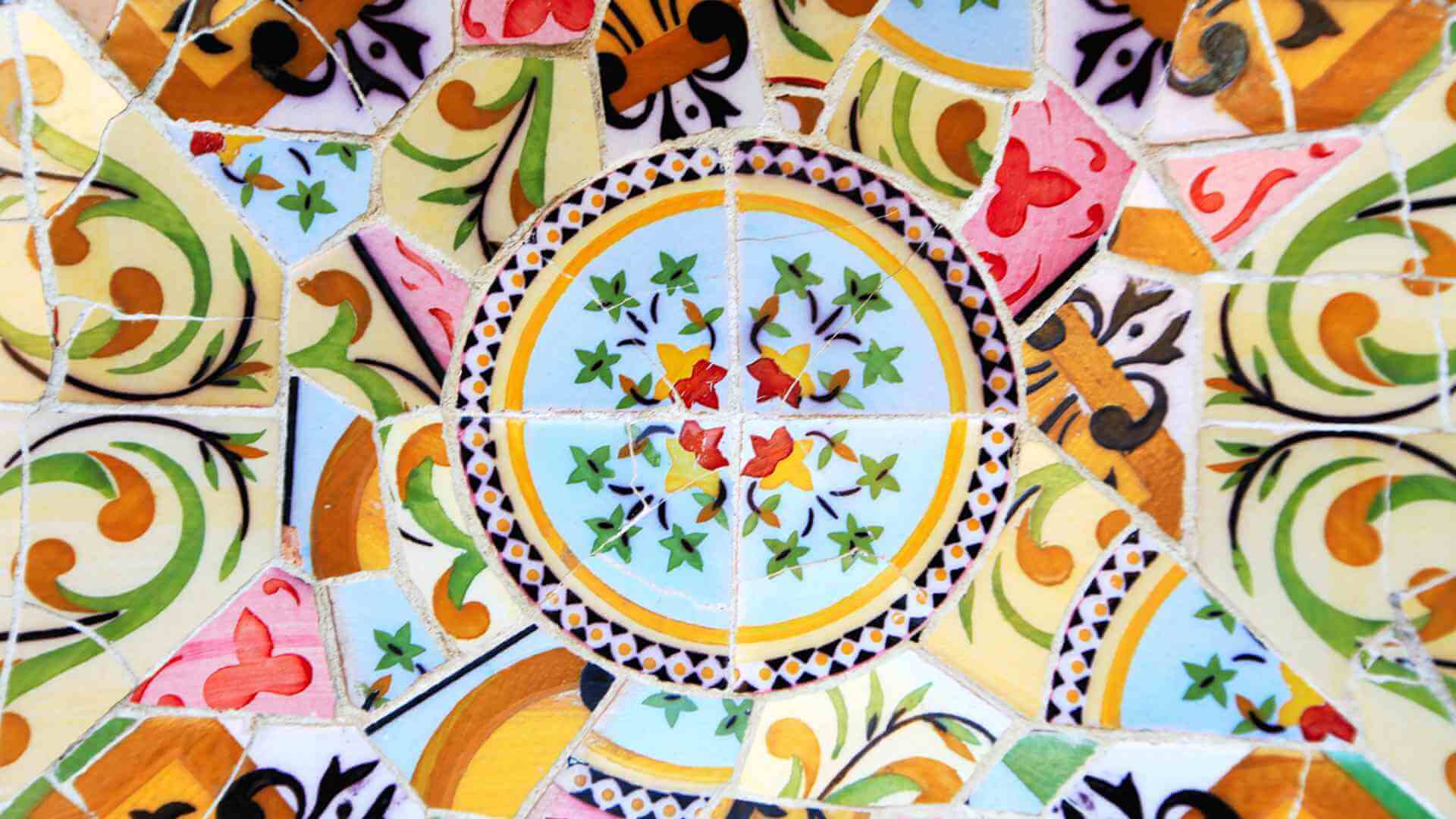
The Pòrtic de la Bugadera: a secret tunnel immersed in greenery
The Pòrtic de la Bugadera is a charming, lesser-known structure that unfolds like a curved stone tunnel, creating a unique visual effect. The portico, which follows the slope of the land, features slanted arches, an example of how Gaudí integrated nature into his works. Here, kids will feel like little explorers in a natural maze.
Where to find the Pòrtic de la Bugadera
To discover the Pòrtic de la Bugadera, head towards the path that leads to the upper part of the park, near the main viaduct. The portico hides along a secondary path that offers breathtaking views of the city of Barcelona. It’s less crowded than the central areas of the park, making it perfect for a peaceful stroll and capturing stunning photos.
The Viaduct de las Jardineras: a perfect spot to observe natural details
The Viaduct de las Jardineras is another less-trodden path in the park. This viaduct, designed to fully integrate with the landscape, stands out for its walls covered in flowers and plants that seem to be part of the structure itself. Kids will love seeing how nature and architecture coexist in perfect harmony.
Where to find the Viaduct de las Jardineras
To find the Viaduct de las Jardineras, walk towards the southeastern part of the park, near the main staircase, but instead of following the crowd to the main areas, take one of the side paths that delve into the greenery. Here you’ll discover this green and tranquil corner, away from the main attractions, perfect for a relaxing walk with the kids.

A park that seems straight out of a fairy tale: why kids will love it
Visiting Parc Guell will feel like stepping into a magical world where fantasy and nature blend in a unique harmony. This park, designed by Antoni Gaudí, is a true daydream, full of vibrant colors, curvy shapes, and artistic details that will capture kids’ imaginations.
Every corner of Parc Guell tells a story: from the famous salamanders winding through the bright mosaics to the whimsical sculptures overlooking the tree-lined paths. Kids can explore like little adventurers, discovering hidden trails and enchanted little squares. The main terrace, with its panoramic view of Barcelona, offers a perfect opportunity to take a break and capture souvenir photos in a fairy-tale atmosphere.
Moreover, interaction with nature is a fundamental element of Parc Guell. Kids can run freely in the gardens, observe colorful plants and flowers, and even discover some of the animals that inhabit the park. The experience is a blend of art and nature, where little ones can develop curiosity and a love for the environment.
Visiting Parc Guell with kids provides them with an unforgettable day in a place that truly feels like it came out of a fairy tale. The wonder they will feel will be a precious memory to hold in their hearts.
Aldo and Giulia still praise it as one of the most beautiful places they’ve ever seen (second only to Turia Park in Valencia, but that’s a whole different story).
How to plan your perfect day at Parc Guell with kids
Visiting Parc Guell with kids is certainly a memorable experience for them, filled with surprises and beautiful discoveries. To make the most of the day, it’s helpful to plan the routes and attractions to see, balancing moments of play and exploration with relaxing breaks.
The park’s structure: main areas and thematic paths
Parc Guell is set on a vast hilly area divided into two main zones: the Monumental Zone and the Public Zone. The Monumental Zone is the paid area, where the most famous works of Gaudí are located, while the Public Zone is accessible for free and features paths immersed in nature.
Within the park, there are several thematic paths you can follow depending on the kids’ interests and the time available. Some of these paths focus on architectural works, while others highlight nature and scenic viewpoints. In any case, good planning will allow you to fully enjoy every corner of the park without tiring out the little explorers too much.
How to navigate between the Monumental Zone and the Public Zone
The Monumental Zone, home to the most famous works like the salamander, Plaça de la Natura, and the Casa-Museo Gaudí, is the busiest area and requires a ticket purchase. The main entrance is located along Carrer d’Olot, where you’ll also find the ticket office and a map of the park. The Public Zone, on the other hand, is perfect for a relaxing stroll through tree-lined paths and lesser-known sculptures.
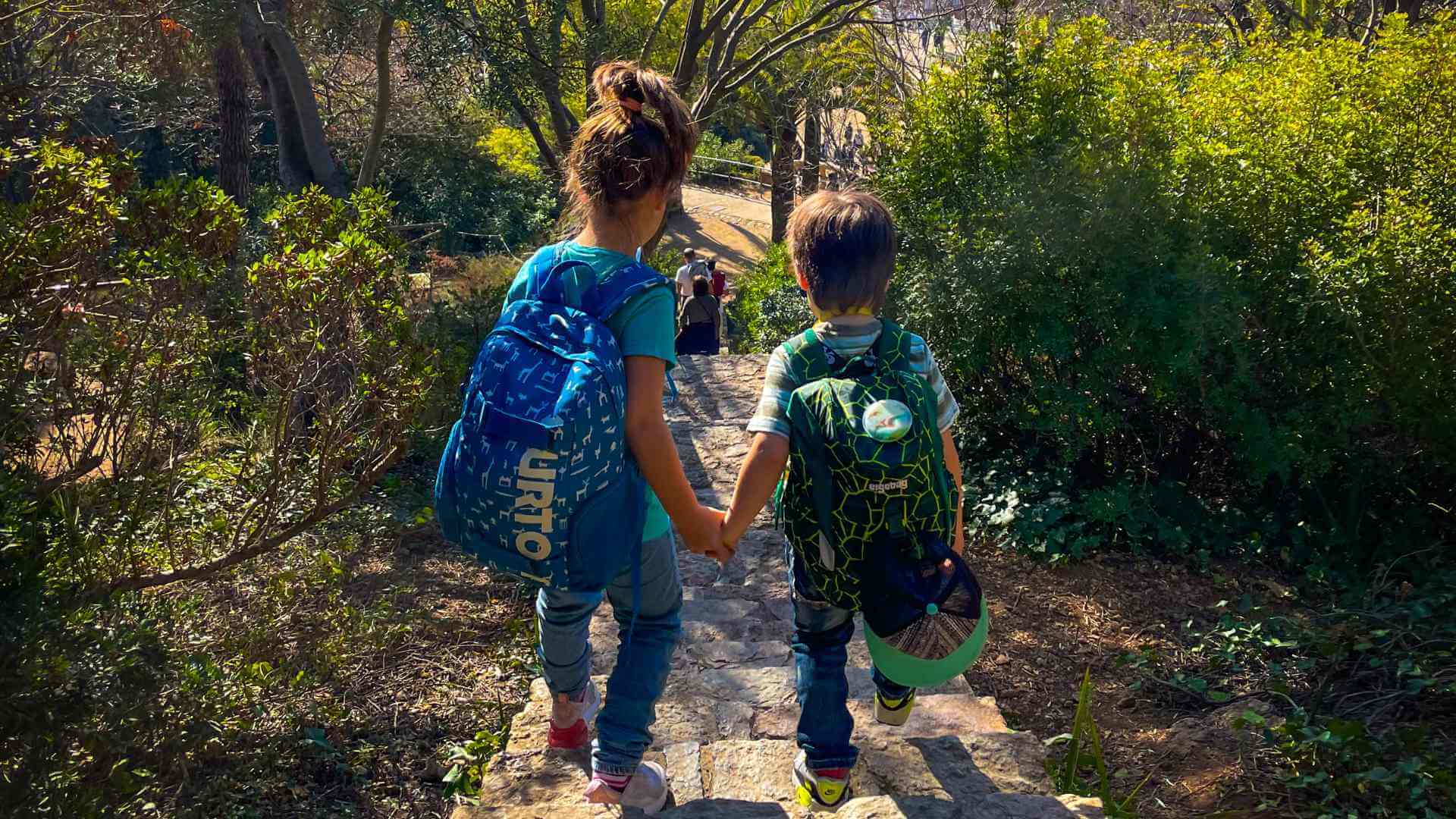
Architectural path: discovering Gaudí's works
If your kids are fascinated by the bizarre shapes and vibrant colors of Gaudí’s works, you can follow a path that guides you through all his main creations in the park. From El Drac to Plaça de la Natura and the majestic Sala Hipostila, this itinerary allows you to fully immerse yourself in Gaudí’s creative genius.
How to follow the architectural path
Start at the main gate, where you can immediately admire the Casa del Portinaio and the staircase with the salamander. From there, head towards the Sala Hipostila and the upper terrace, then continue to the Casa-Museo Gaudí, located at the top of the park. This route is perfect for those who want to focus on the architectural and artistic aspects of the park.
Natural path: between trails and viewpoints
If you prefer to spend a day immersed in nature, you can opt for a quieter path, exploring the flora and fauna that populate Parc Guell. Gaudí designed the park in harmony with the surrounding environment, and there are numerous hidden corners where kids can run, play, and discover nature.
How to follow the natural path
This path takes you to the Public Zone, accessible for free, where you can stroll among the stone viaducts, like the Viaduct del Rospo and the Viaduct de las Jardineras. Follow the winding trails uphill until you reach the top of the park, where you can enjoy a stunning view of Barcelona.
Scenic path: the best views of Barcelona
After exploring the wonders of Parc Guell, it’s important to plan for some breaks. Fortunately, the park is filled with green areas where you can relax while the kids play. Bring along a snack to enjoy in the shade of the trees or stop by the small kiosks in the park for a quick refreshment.
Where to take a break
The best areas to take a break are found in the Public Zone, along the trails leading to the upper part of the park. There are numerous shaded benches and areas where kids can run and play. Plaça de la Natura is also a great spot to stop and rest while enjoying the view.
Organizing a perfect day at Parc Guell with kids means carefully planning the routes to follow, balancing exploration and relaxation. Whether you choose to explore the architectural wonders or enjoy a walk in nature, Parc Guell offers a unique experience that will enchant the whole family.
Avoid the crowds and make the most of your visit: ideal times to visit
To visit Parc Guell without being overwhelmed by crowds, it’s important to choose the right moments. The park is one of the most popular attractions in Barcelona, and during peak season or on weekends, it can get quite crowded, making it harder to enjoy its beauty and hidden corners.
The ideal time to visit Park Guell with kids is early in the morning, just when it opens, or in the late afternoon, around sunset. During these times, the temperatures are cooler and the atmosphere is more tranquil, allowing you to explore the park’s most famous areas, like Plaça de la Natura or the staircase with the salamander, without too many people around.
Another tip is to visit the park during weekdays when most tourists prefer the city’s central attractions. This way, you can give your little explorers a relaxing and immersive visit in a serene and magical atmosphere, perfect for experiencing Park Guell to the fullest!
Picnic or restaurant? Where to eat stress-free near Parc Guell
After a morning spent exploring Park Guell with the kids, it’s time to think about where to eat. When we travel, we always prefer a nice, healthy, and economical picnic. Unfortunately, Barcelona is filled with touristy restaurants that often don’t offer the best value for money. The ideal solution is to stay in an apartment with a kitchen so you can prepare a packed lunch with fresh, wholesome ingredients. It’s a practical option that allows you to enjoy the park without stress while also saving money.
However, if you haven’t had time to prepare lunch, our favorite solution is to head to the supermarket and buy something directly. You can find healthy options like fresh fruit, sandwiches, or snacks suitable for kids, perfect for a relaxing picnic in one of the park’s green corners.
One last tip: in central Barcelona, it’s pointless to look for small local food shops because even those tend to hike up prices for tourists. It’s better to go to a large supermarket, where you’ll find a variety of healthy options at more reasonable prices.
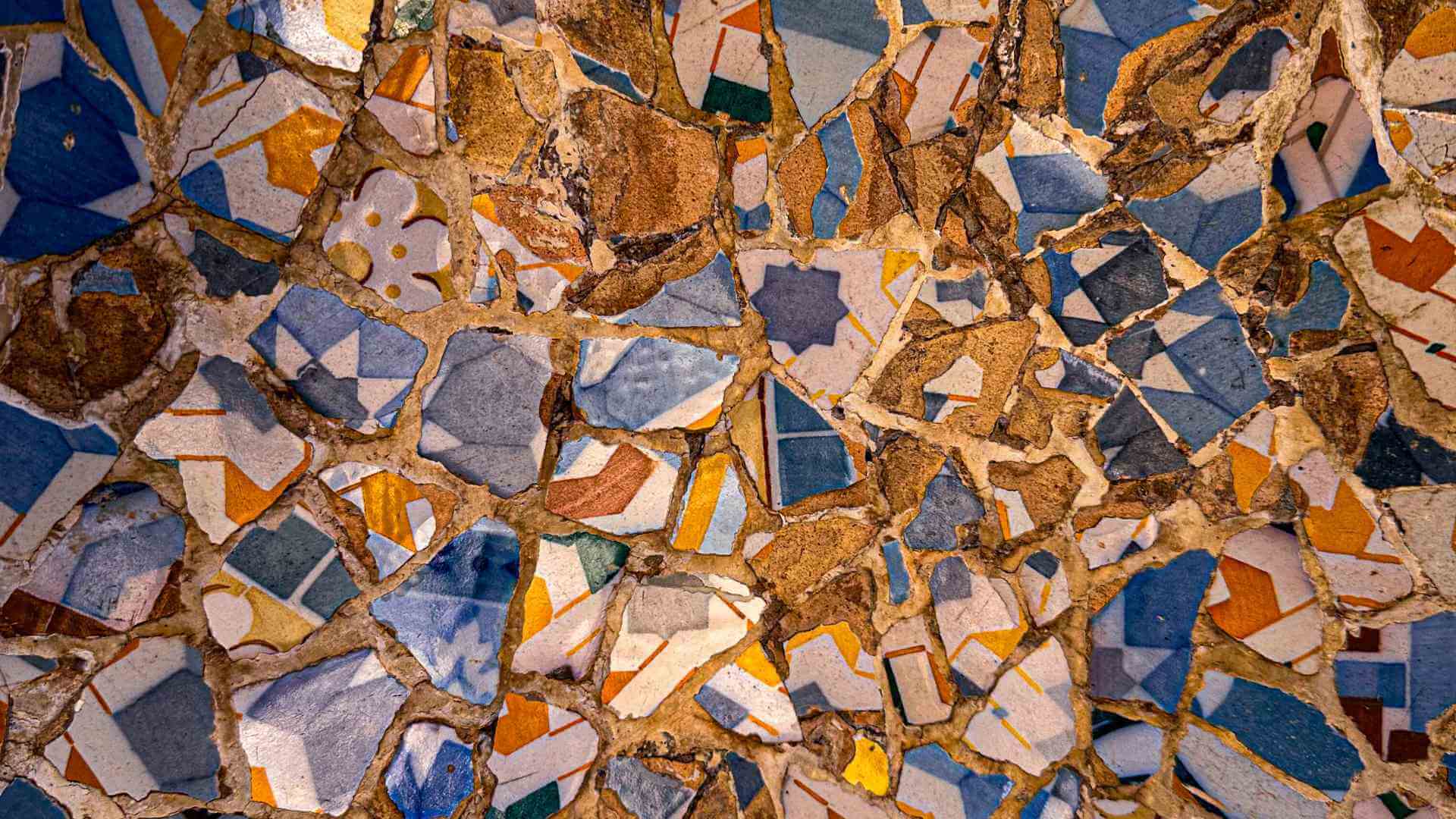
Information, costs, and tickets to visit Park Guell
Before planning your visit to Park Guell, it’s helpful to have all the practical information at hand. Entrance to the park isn’t entirely free: the monumental area, which includes Gaudí’s famous works like the salamander staircase and the panoramic terrace, requires a ticket purchase.
Ticket prices vary depending on age and the type of visit you want. Adults pay around €10, while children aged 7 to 12 benefit from a reduced rate, usually around €7. Children under 5 enter for free, which is great news if you’re visiting Park Guell with kids! Tickets can be purchased directly online, saving you time and avoiding long lines at the entrance.
To stay updated on current costs, here’s the direct link to where you can book your entry.*
The park is open every day of the year with the following schedule:
From January 1st to March 24th: from 08:30 to 18:15 (last entry at 17:30)
From February 17th to March 24th: extended hours until 19:00 (last entry at 18:00)
From March 25th to April 29th: from 08:00 to 20:30 (last entry at 19:30)
From April 30th to August 26th: from 08:00 to 21:30 (last entry at 20:30)
From August 27th to October 27th: from 08:00 to 20:30 (last entry at 19:30)
From October 28th to December 31st: from 08:30 to 18:15 (last entry at 17:30)
A small tip: booking your ticket in advance will help you avoid surprises and guarantee entry at your preferred time. Additionally, if you want to delve deeper into the park’s history, there are guided tours available in various languages.
Below, I’ll share some combined tours to help you plan a guided visit while saving*.
Fun facts that will make you and your kids smile
During your visit to Park Güell with kids, there are plenty of little curiosities that will make the experience even more special. Here are 10 fun facts that will bring smiles to you and your little explorers:
- The salamander is not just a decoration – The famous dragon (or salamander) on the staircase has become the park’s symbol, but did you know there are over 400 dragon representations all over Barcelona?
- A park for aristocrats? – Gaudí originally envisioned Park Güell as a garden-city for the wealthy, with luxury homes and plenty of greenery, but the project failed, and today, we can all enjoy this magical space.
- The endless bench – The large wavy bench on the main terrace is not just beautiful, it’s also 110 meters long! How long will it take you to walk across it?
- A cave with a secret – It’s said that in the caves under the main staircase, there was once a cobbler’s workshop! A curious detail that kids can imagine as part of a fairytale.
- A musical park – The vibrant colors and curved shapes of Park Güell are not only visually striking, but Gaudí designed them to resonate with the environment. If you listen closely, you might hear the echo of the city below!
- A puzzle terrace – The famous panoramic terrace is decorated with broken ceramics that were reused to create a giant mosaic. Gaudí’s idea was to avoid wasting anything!
- Who needs straight columns? – The park’s columns, especially in the Hypostyle Hall, are all slightly tilted. This not only makes them more stable but also more unique, just like nature’s curves.
- A selfie-proof salamander – The salamander at the entrance is one of the most photographed sculptures in Barcelona. Millions of tourists stop for a selfie with it each year… will you be next?
- Fairy-tale houses – The two houses at the entrance look like they came straight out of a storybook. In fact, one of them was Gaudí’s residence and is now a museum you can visit!
- An incomplete park – Even though it seems perfect, the park was never actually finished as Gaudí had planned. The original project was supposed to include 60 houses, but only two were built!
These fun facts will surely entertain the kids as they explore the secrets and magic of Park Güell!
where you’ll find more curiosities about the city of Barcelona and an entire treasure hunt set in Park Gü
FAQ: su Parc Guell con i bambini: risolvi ogni dubbio prima di partire!
What is the best time to visit Park Güell with kids?
The ideal time to visit Park Güell is early in the morning, as soon as it opens, or in the late afternoon. During these times, you can avoid the crowds, and the park will be more peaceful. On weekdays, it’s easier to enjoy the park with fewer people compared to weekends.
Where can the most famous works of Park Güell be found?
The most iconic works are located in the monumental area of the park, which includes the famous staircase with the salamander, the panoramic terrace with the undulating bench, and the inclined columns of the Hypostyle Room. Every corner hides artistic details that will fascinate the kids.
Are there hidden works to discover in Park Güell?
Yes, Park Güell is filled with secret corners and lesser-known works, such as the caves beneath the main staircase or the sloping paths that resemble nature’s trails. These less-frequented areas offer a more intimate and magical discovery of the park.
How can I avoid tourist trap restaurants near Park Güell?
Our advice is to organize a picnic! You can buy healthy and affordable food at a nearby supermarket and enjoy a relaxing meal in the park. If possible, staying in an apartment with a kitchen will allow you to prepare your packed lunch with ease.
How much does it cost to visit Park Guell?
Access to the monumental area of Park Guell requires the purchase of a ticket. Prices for adults are around €10, while reduced rates apply for children aged 7 to 12. Children under 6 enter for free.
Is it possible to have a picnic inside the park?
The best places to take unforgettable photos include the panoramic terrace, offering breathtaking views of Barcelona, and the famous salamander staircase, perfect for a postcard-worthy selfie!
È possibile fare un picnic all'interno del parco?
Absolutely! There are many green areas perfect for laying out a blanket and having a picnic. Preparing a packed lunch is the ideal solution for a relaxing break without stress.
Digitally Yours
☀️ Sara ☀️
And as I started doing in the last articles, here are some useful links that can help you organize your trip to Barcelona:
- Trip advisor: all the reviews on what to do in Barcelona
- Spain info
*Hi, just a heads-up that some of the links in this article are affiliate links. This means that if you make a purchase through our links, we may earn a small commission that helps us create useful content for the community. We only recommend products that we believe can add value, so thank you for your support!




